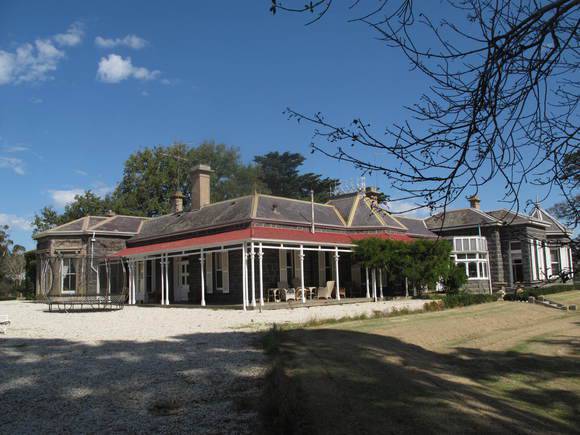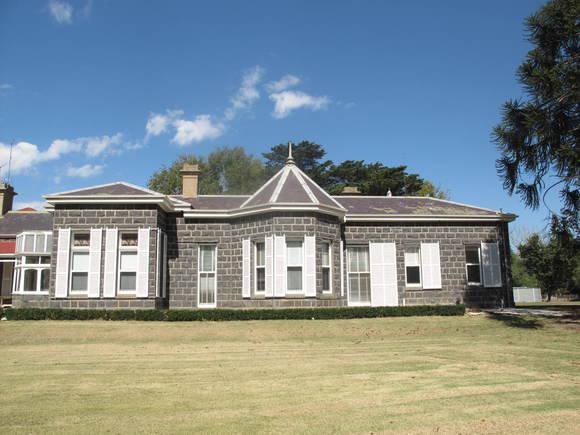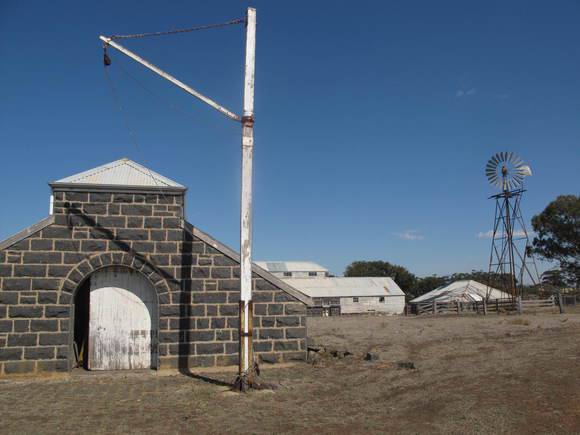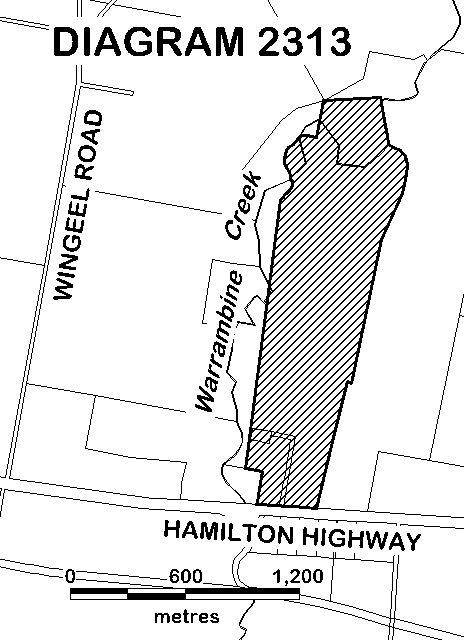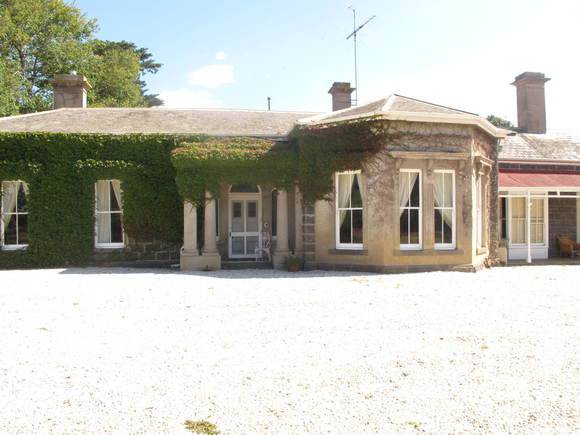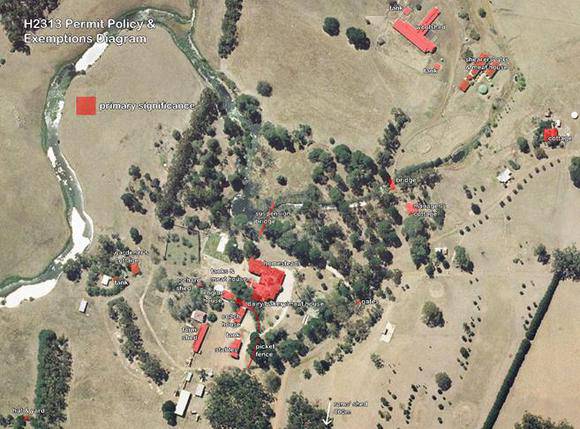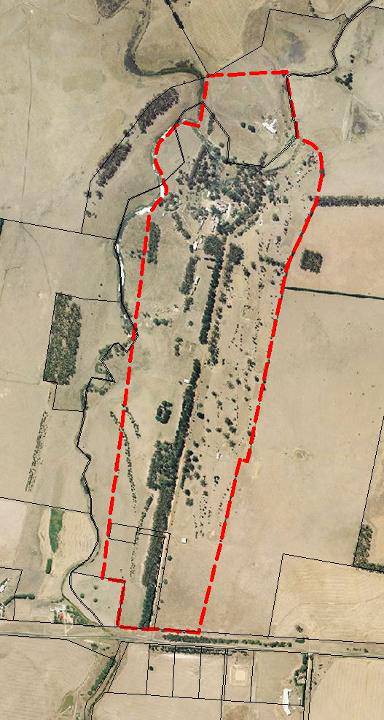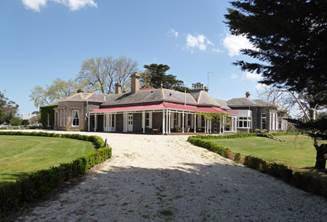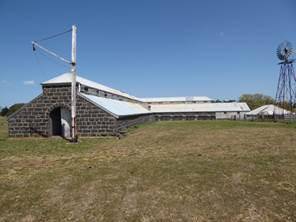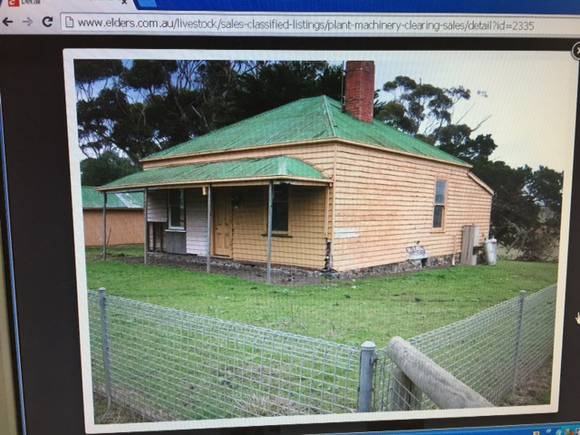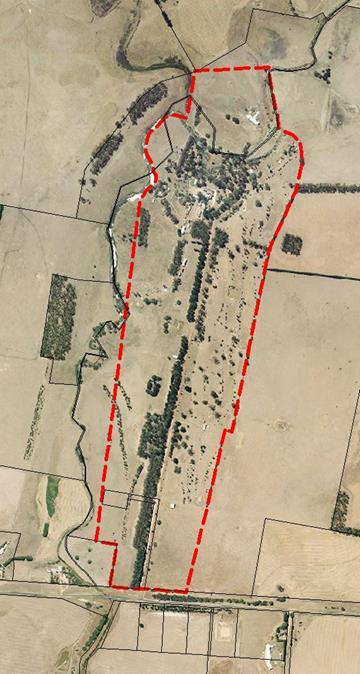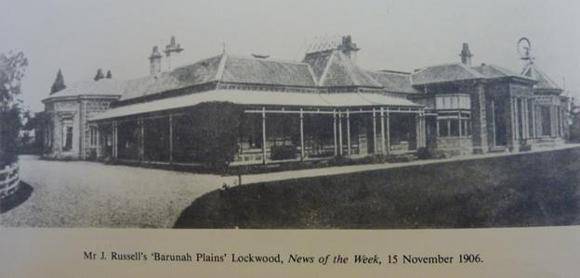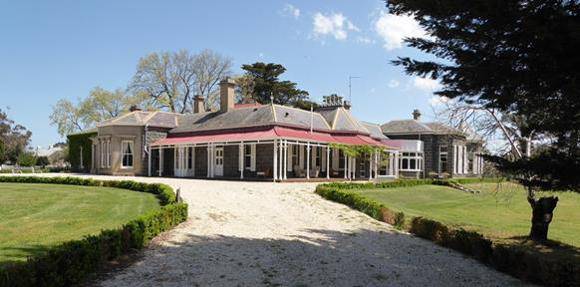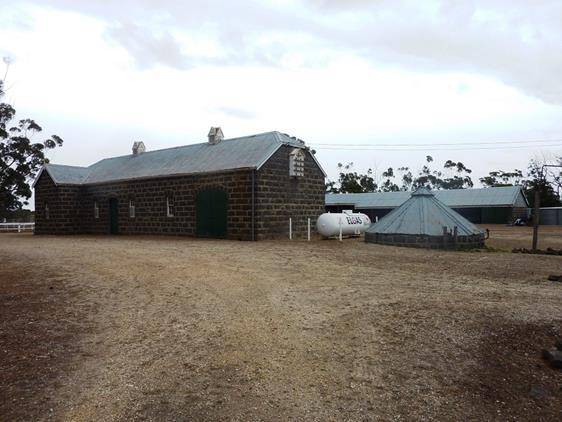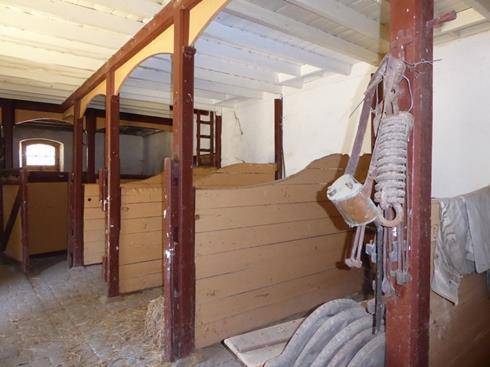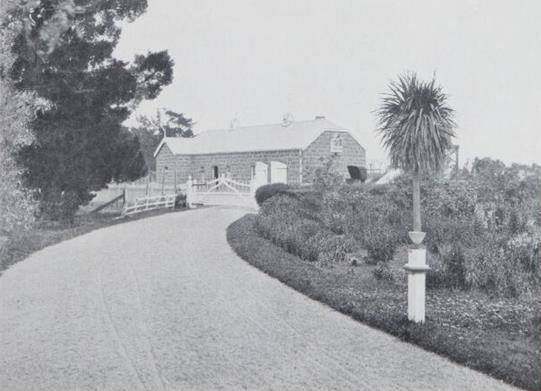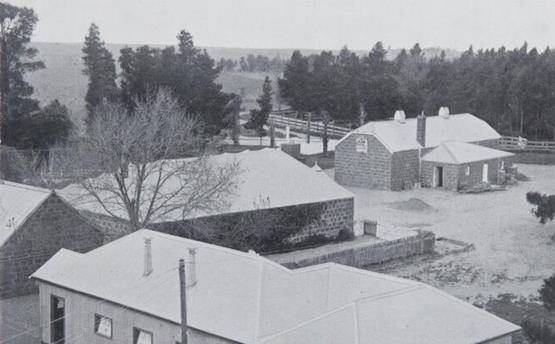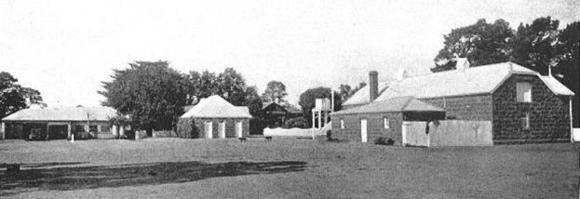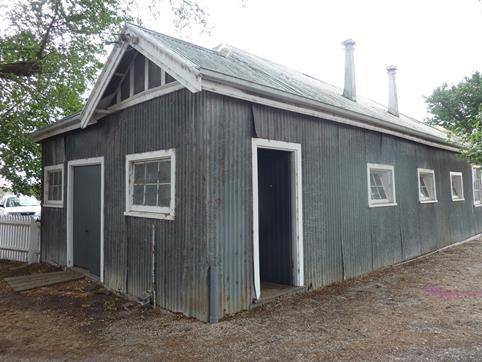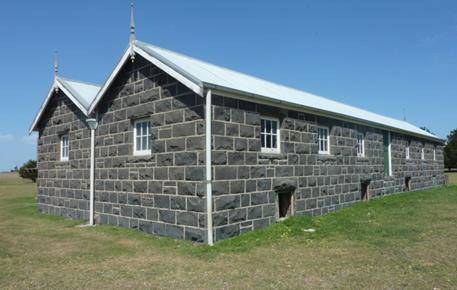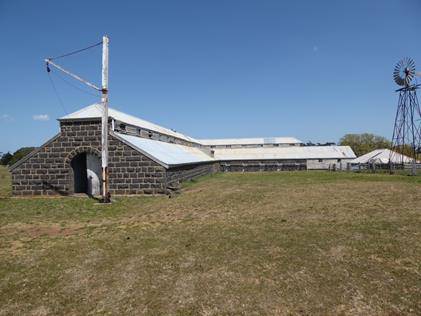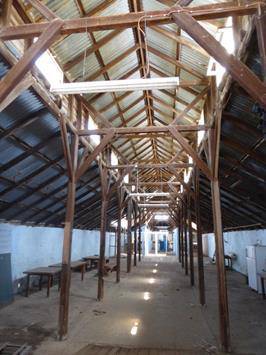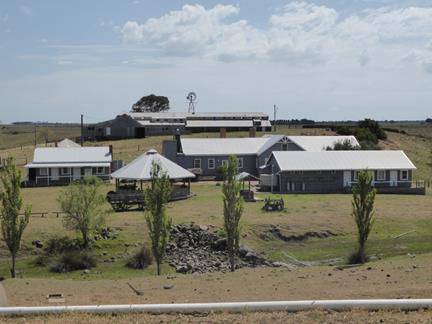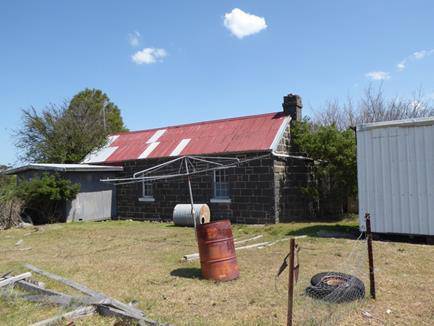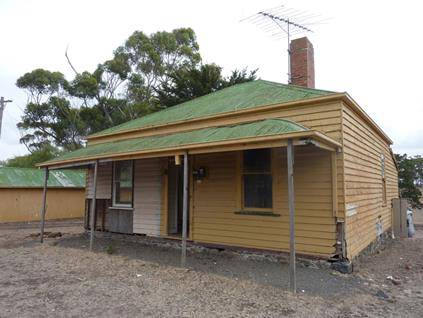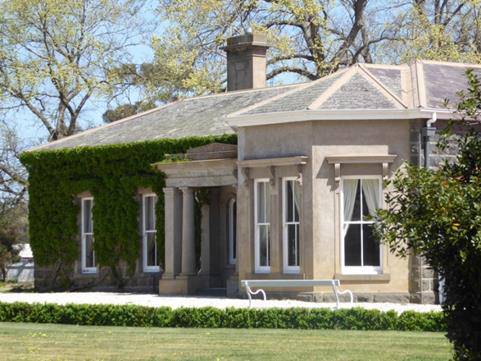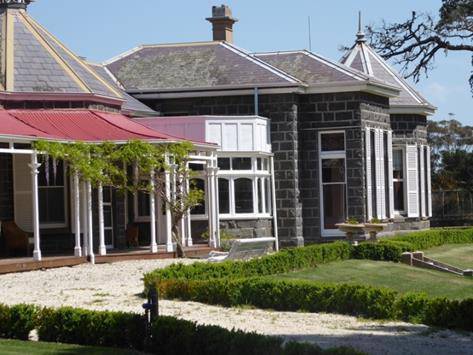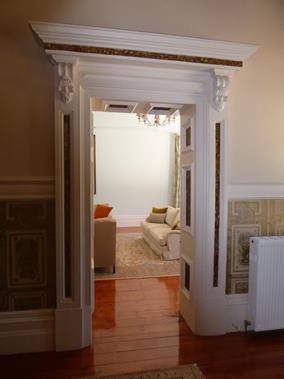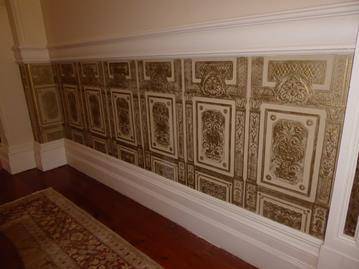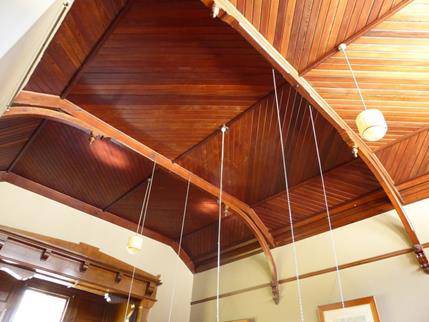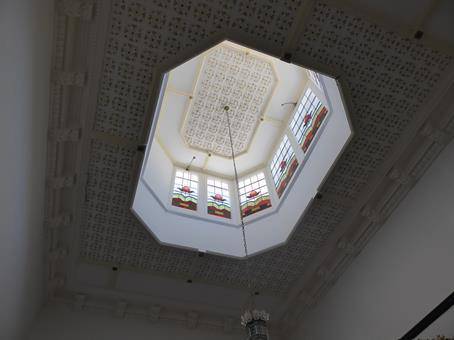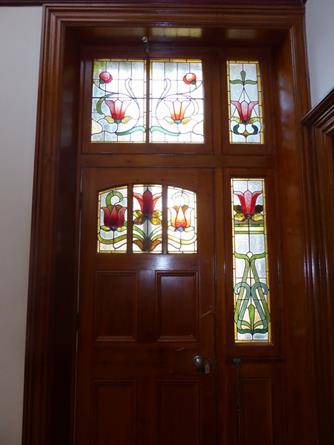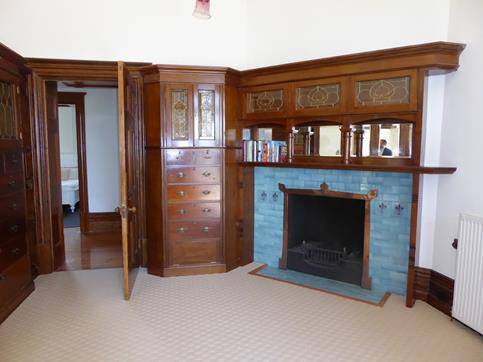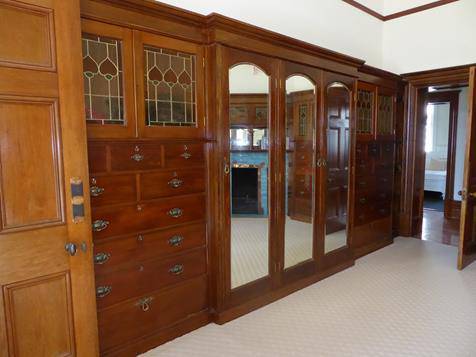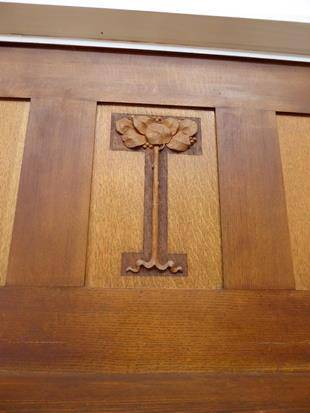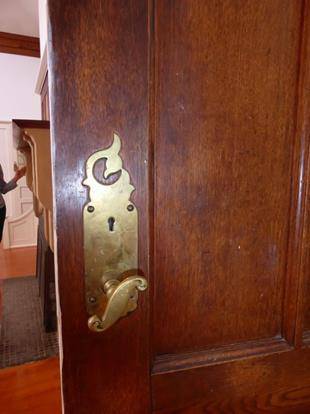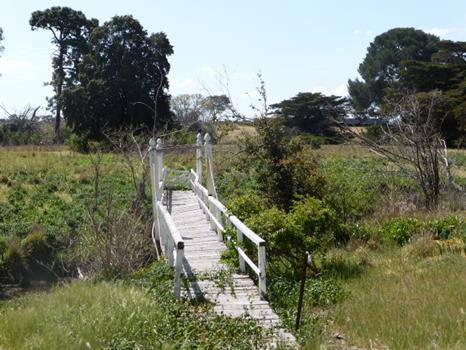| Back to search results » | Back to search page » |
|
BARUNAH PLAINS
Statement of Significance
What is significant?
Barunah Plains including the homestead, stables, dairy and bakehouse, coach house, engine house, farm shed, manager's cottage, cottage, woolshed, shearers' quarters, suspension bridge, gardener's cottage, orchard shed, water tanks, meat houses, rams' shed and remnant garden. Barunah Plains developed into a substantial and prosperous farming complex after acquisition by brothers Thomas and Philip Russell, and their cousin John Simson, in 1851. Originally known as Long Water Hole, the land was a pastoralist run from the late 1830s and leased by James Austin from the late 1840s. During the nineteenth century the pioneering Russell family became extensive landowners in western Victoria and by the 1880s Barunah Plains had developed into a leading merino sheep establishment. A house was constructed on the site in 1867 to designs by local architects Davidson and Henderson, and substantial additions increased the size of the homestead in the boom period of the 1880s. Further additions designed by Geelong architects Tombs and Durran in 1903 contain outstanding Arts and Crafts style interiors. A number of substantial bluestone outbuildings, including a large woolshed, were constructed at the property as it developed into a successful farming complex. The 20,000 hectare property was reduced to about half its size after soldier settlement subdivision in 1949, however successive generations of the Russell family continued to live at Barunah Plains until 1978. In the 1990s a golf course was added to the property and this operated as a tourist facility for a period of time. Barunah Plains is a farm complex situated on the Warrambine Creek. It includes a large single storey, bluestone homestead which has been constructed in stages. It consists of a number of protruding bays, turret-like roofs and a return verandah which address lawned areas to the north and east. Exceptional Arts and Crafts detailing can be seen throughout the house, in particular in the west wing and central ballroom, where outstanding examples of stained timber, metal and tile work and stained glass are located. Interior detailing from the boom period has also been retained, including embossed wallpaper in the main entrance and a timber lined coved ceiling in the billiard room. A number of original outbuildings and structures have been retained. The majority are constructed of bluestone, including a large t-shaped woolshed, stables, dairy and bakehouse, coach house, farm shed, rams' shed, manager's house, cottage and water tanks. A corrugated iron clad engine house contains original electrical power plant machinery. Remnants of the original formal homestead garden and parkland remain. Early structures include a suspension bridge over the Warrambine Creek. This site is part of the traditional land of the people of the Kulin Nation.
How is it significant?
Barunah Plains is of historical, architectural and aesthetic significance to the State of Victoria. It satisfies the following criterion for inclusion in the Victorian Heritage Register: Criterion A Importance to the course, or pattern, of Victoria's cultural history. Criterion D Importance in demonstrating the principal characteristics of a class of cultural places and objects. Criterion E Importance in exhibiting particular aesthetic characteristics. Criterion H Special association with the life or works of a person, or group of persons, of importance in Victoria's history. Barunah Plains is significant at the State level for the following reasons: Barunah Plains is historically significant for its association with the early settlement of Victoria, with the development of its important wool industry and for its long association with the Russell family from 1851 to 1978. As one of the most successful merino sheep studs in Victoria, the property is associated with the heyday of the pastoral era in Victoria and the prosperity of the Western District pastoralists in the nineteenth and early twentieth centuries. [Criteria A] Barunah Plains is architecturally significant for the homestead and its collection of intact outbuildings which help to illustrate the various activities undertaken at the property. Together with the homestead, these buildings display excellent craftsmanship in the execution of stonework. [Criterion D] Barunah Plains is of aesthetic significance for its outstanding Arts and Crafts interiors, in particular in the ballroom and rooms in the west wing. The interiors of these additions were executed in a highly distinctive Federation Arts and Crafts style and contain unique hand-crafted fittings and elements. [Criterion E] Barunah Plains is significant for its long association, from 1851 to 1978, with the Russell family who were amongst the most successful settlers of Victoria's Western District and instrumental in the development of the wool industry in Victoria. [Criterion H]
Group
Farming and Grazing
Category
Homestead Complex


